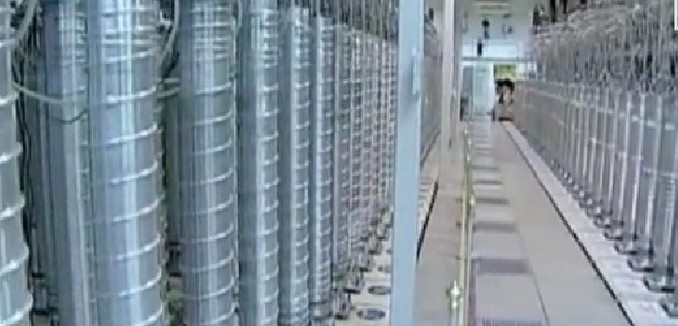The International Atomic Energy Agency’s recently released report on Iran’s nuclear activities shows that the regime developed a covert nuclear weapons program that it advanced alongside its publicly declared one, Olli Heinonen, the former deputy director general of the IAEA, wrote in an analysis published Tuesday. Calling this finding “disconcerting,” Heinonen added that the IAEA still “lacks information” about the full extent of Iran’s past nuclear research, a situation that will “complicate its ability to effectively monitor Iran’s nuclear activities.”
While the IAEA found no evidence that Iran had diverted any nuclear material from its declared program to its clandestine one, it is possible that Iran could have used nuclear material that was not accounted for, Heinonen argued. (In the past, Heinonen raised concerns about the possibility that Iran had acquired enough carbon fiber to build thousands of undeclared centrifuges.)
Heinonen noted that Iran failed to abide by past United Nations Security Council resolutions and reveal the full extent of its past nuclear work, giving only partial answers to some inquiries about its activities while completely dismissing others. He emphasized that without immediate access to “all sites, equipment, persons and documents” that the IAEA requested, Iran’s nuclear file “simply cannot be closed.” Otherwise, the IAEA will be unable to establish the full extent of Iran’s nuclear program and “effective verification will be compromised.”
To ensure that the agency has enough information to monitor Iran’s future compliance with the nuclear deal, Heinonen recommended that the P5+1 nations and the IAEA “request a complete declaration from Iran of all of its past and present nuclear activities.” This full accounting would allow the IAEA to determine with “high confidence” whether Iran has a nuclear weapons program. Finally, Heinonen called on the IAEA to insist that future environmental sampling be completed by agency personnel, rather than Iran, as self-inspections undermine the nuclear agreement.
Despite the IAEA report’s exposure of Iran’s secret nuclear weapons program, the U.S. and other P5+1 nations want the agency to end its investigation into Iran’s past nuclear work. However, various notable non-proliferation experts have stressed that the agency’s file on Iran’s nuclear program should not be closed.
An analysis of the IAEA’s findings by the Institute for Science and International Security, which is headed by former weapons inspector David Albright, concluded that “[the] Parchin file can in no way be considered closed. It should remain open and the IAEA should continue its investigation into the activities that took place at the site. It is time that Iran starts to admit what really happened at Parchin.”
Similarly, Emily Landau, head of the Arms Control Program at the Institute for National Security Studies, wrote in The Tower last week that the IAEA report “must not be ignored, because it does break Iran’s narrative of having done no wrong in the nuclear realm.”
An analysis by the chief Washington correspondent of The New York Times also questioned whether allowing Iran to dismiss the IAEA’s inquiries into its past nuclear work meant that the regime will “be emboldened to stiff-arm inspectors as they seek to enforce the nuclear deal.”
[Photo: euronews / YouTube ]




